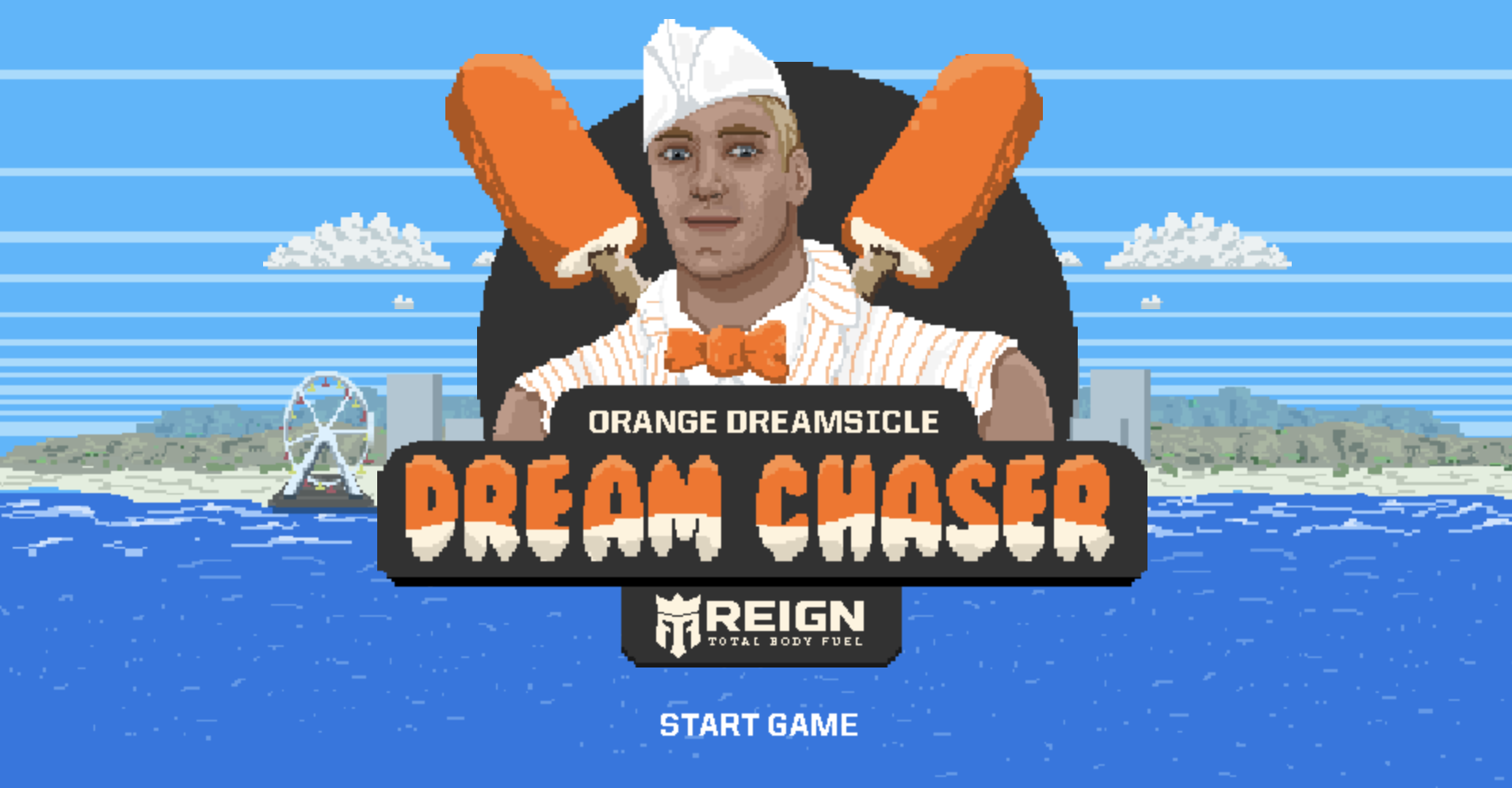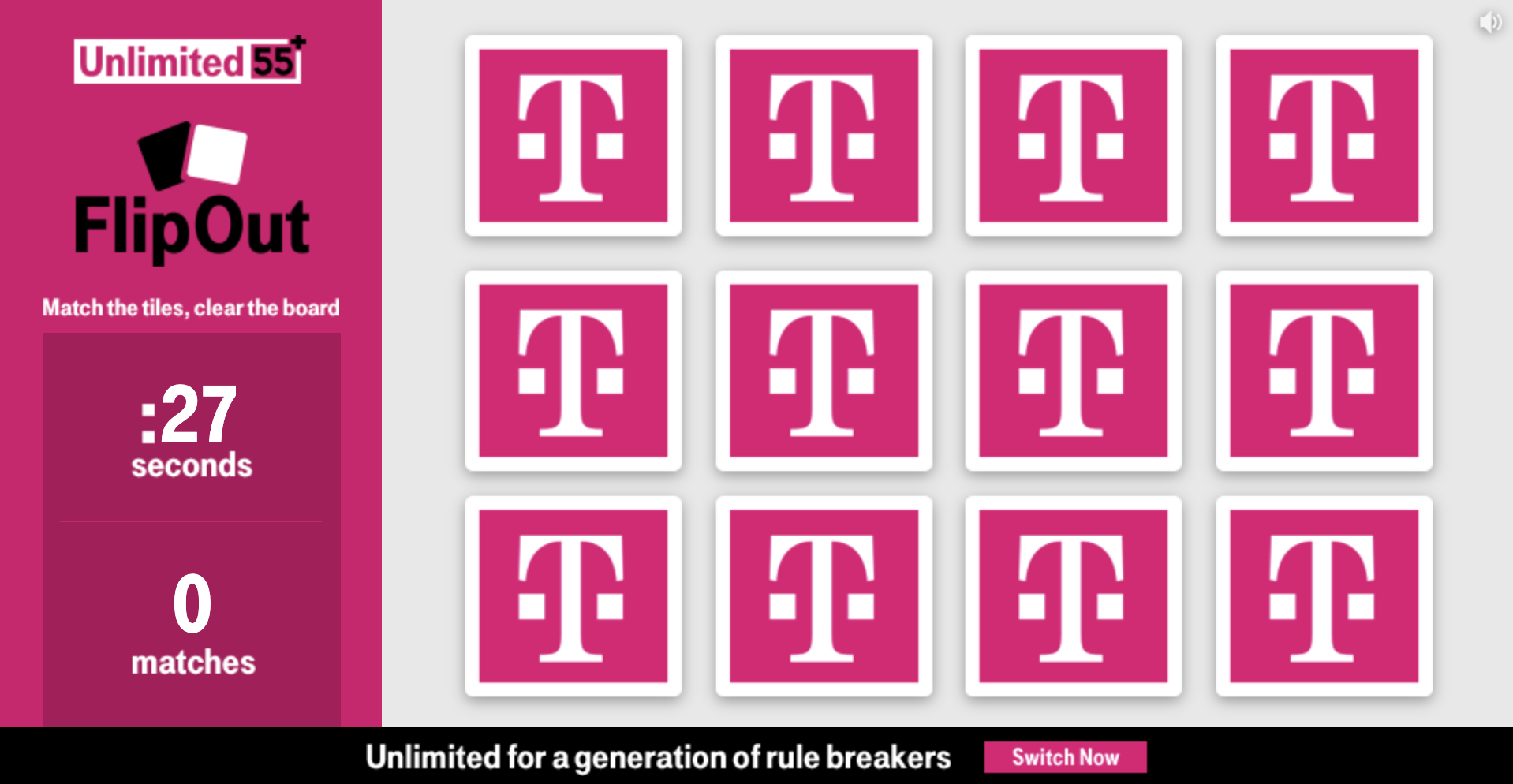How to Master Interactive Ad Creative: Games

Welcome to our Interactive Storytelling series. Here, we’ll share our favorite strategies on how to turn static stories into interactive ad narratives. Today we’re diving into games. Missed the last one on Guided Stories? Read it here.
Remember when “gamification” was one of marketing’s most unavoidable buzzwords? While earning badges for posting restaurant reviews or filing your taxes on time can feel a bit forced, everyone loves a good game. And ads-as-games can be incredibly powerful when done correctly. While they’re (by definition) fun, under the playful surface is a delicate touch with regard to strategy and storytelling. Here’s how we handle it at Infillion:
When we build game-based ads, the first decision we make is “what kind of game are we building?” Think about it: some games challenge your reaction speed (think Mario). Others engage memory or critical problem-solving (think Tetris or even Solitaire).
Different brands and campaigns will resonate with different game types. Movie titles, for instance, might benefit from “slower” games to allow brand content to really sink in. Brands looking to increase their perception of being fun might go for something more fast-paced, where on-screen time isn’t as important.
Here are our game strategies, along with some general tips and tricks.
Reaction Games
Reaction games, as the title suggests, test how quickly our users can react to on-screen challenges. You’re avoiding obstacles, or aiming at a target, often while racing a clock.
Best used for: Brands looking to spend their ad investment on a little fun.
Not every ad has to drive bone-dry spreadsheet metrics. With games, a brand experience can be engaging and fun.
Games can work for a surprising variety of brands. In the past, we’ve run perception-shifting game campaigns for brands like ULTA Beauty and SunTrust Bank.
Caveats: You’ll get better results from brand lift – which at Infillion we measure as part of our post-campaign analysis – than more standard interaction metrics. Reaction games often rely on keyboard button presses rather than clicks, so the “interactions” will be light, but that doesn’t mean playtime is.
Memory Games
Here, we’ll challenge a user’s ability to correctly remember key elements. Think of these like the classic match games we may have played as kids.
Best used for: Interactions and upper-funnel movement.
With regards to the brand lift funnel, the definition we use for “familiarity” is a) knowing a brand exists and b) knowing something about it.
That makes memory games ideal for driving familiarity. In the example above. users cannot win unless they commit brand elements to memory. And one thing about games – people really want to win. And you really want them to remember your brand. So: everyone wins.
Caveats: On a typical interactive creative, assume you’re looking at 3-5 interactions. With a memory game, those interactions can be in the double digits. But it’s important to remember that Memory Games take a lot of clicks to complete. A high average interaction rate doesn’t mean users saw every piece of your creative. Memory Games are great for a lot of nice-to-have brand elements. For campaigns with must-see content, consider another strategy.
Discovery Games
If you’ve ever read Where’s Waldo?, then you’ve experienced an analog version of a Discovery Game.
Discovery Games ask users to hyper-focus on your brand story in order to find something.
This works because searching for something so intently increases the perceived value behind the thing they’re searching for – most typically, something associated with your brand. In turn this can increase brand perception. Here’s an example:
Best used for: Brands that are looking to surprise and delight. Want to build awareness and consideration for a comparatively mundane product? This is a great way for consumers to see how your brand (or its mascot) literally stands out. You’re associating finding your brand with victory, after all.
Caveats: Since this is effectively a digital version of hide-and-seek, it’s possible that some users won’t find the hidden object. As a result, consider ensuring that the hidden object is something that isn’t critical to campaign success. But for people who do find it? Maybe surprise them with a discount or other promotion.
Performance: What to Expect
Classically, we’ve seen games drive full-funnel lift, but comparatively light CTR. For conversion, then, consider retargeting consumers who played your game with a follow-up campaign that deploys rich media ads, like our NeXt product..
But for funnel movement and increased brand perception, games are hard to beat.
Interested in building a ad game for your brand? Click here to reach out and get started!
Subscribe to our blog:
Related Posts:

Infillion by the Numbers: See the Year’s Creative Stats
At Infillion, our tech and creative teams build for desktop, mobile, connected TV, and even sports stadiums. That’s a lot of platforms – and a lot of different creative strategies. What were some of our creative milestones in 2023? From brand lift to 3-card monte,...

How to Master Interactive Ad Creative: Content Collections
Welcome to our Interactive Storytelling series. Here, we’ll share our favorite strategies on how to turn static stories into interactive ad narratives. Missed the last one on quizzes? Read it here. For brands that need to advertise a larger suite of products...

How to Master Interactive Ad Creative: Quizzes
Welcome to our Interactive Storytelling series. Here, we’ll share our favorite strategies on how to turn static stories into interactive ad narratives. Missed the last one on games? Read it here. Quizzes are among the most effective ad units that we create at...
Let's Connect



